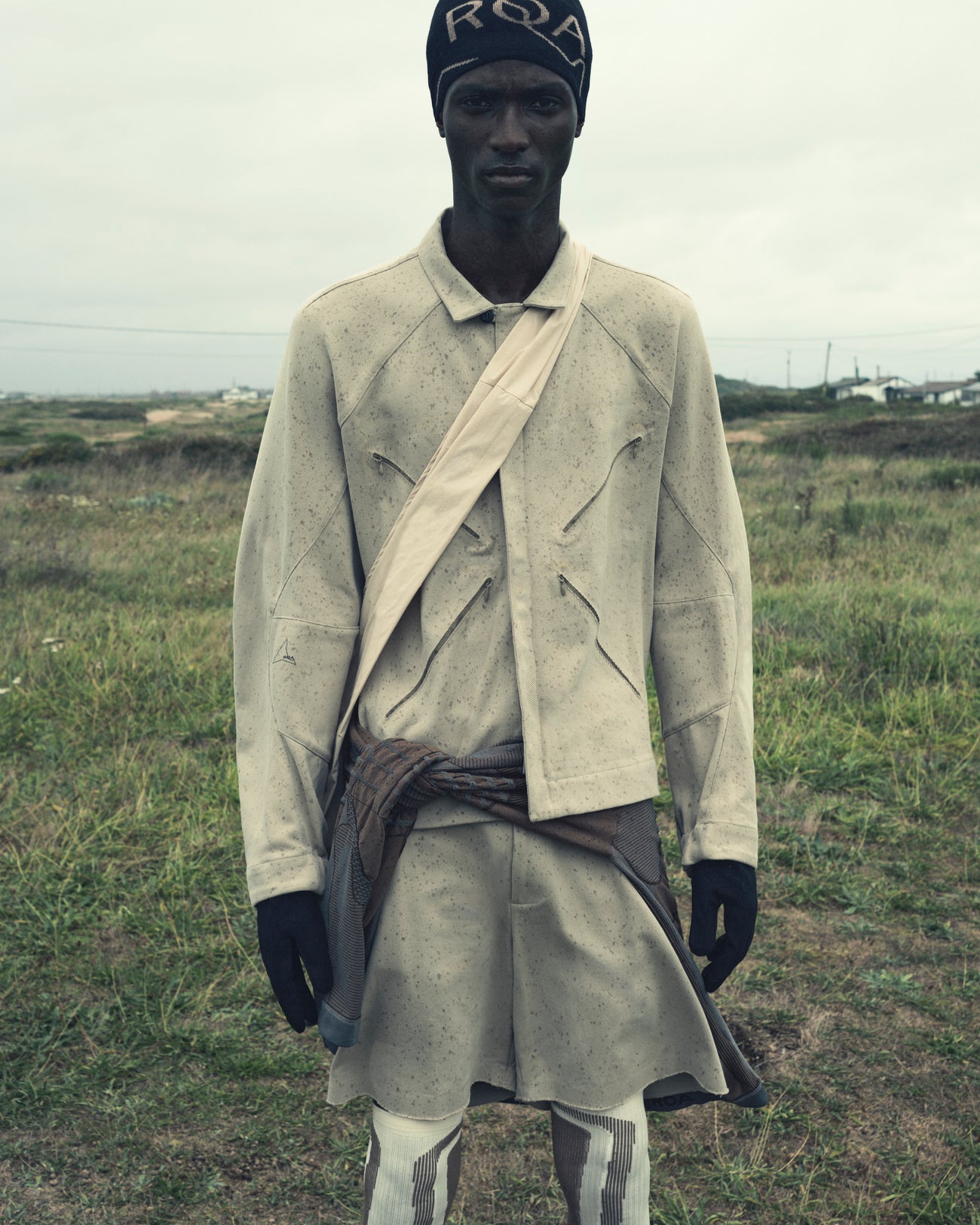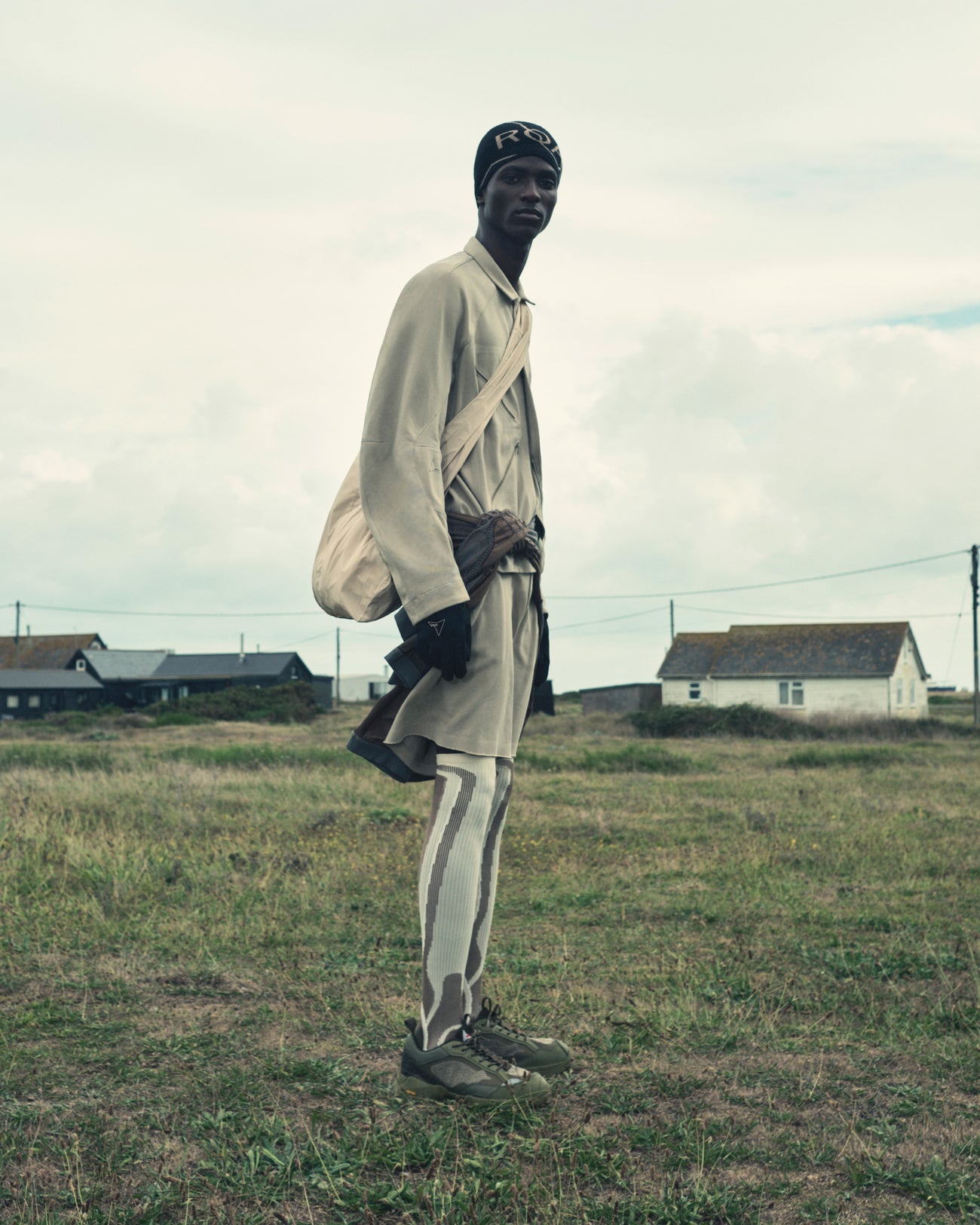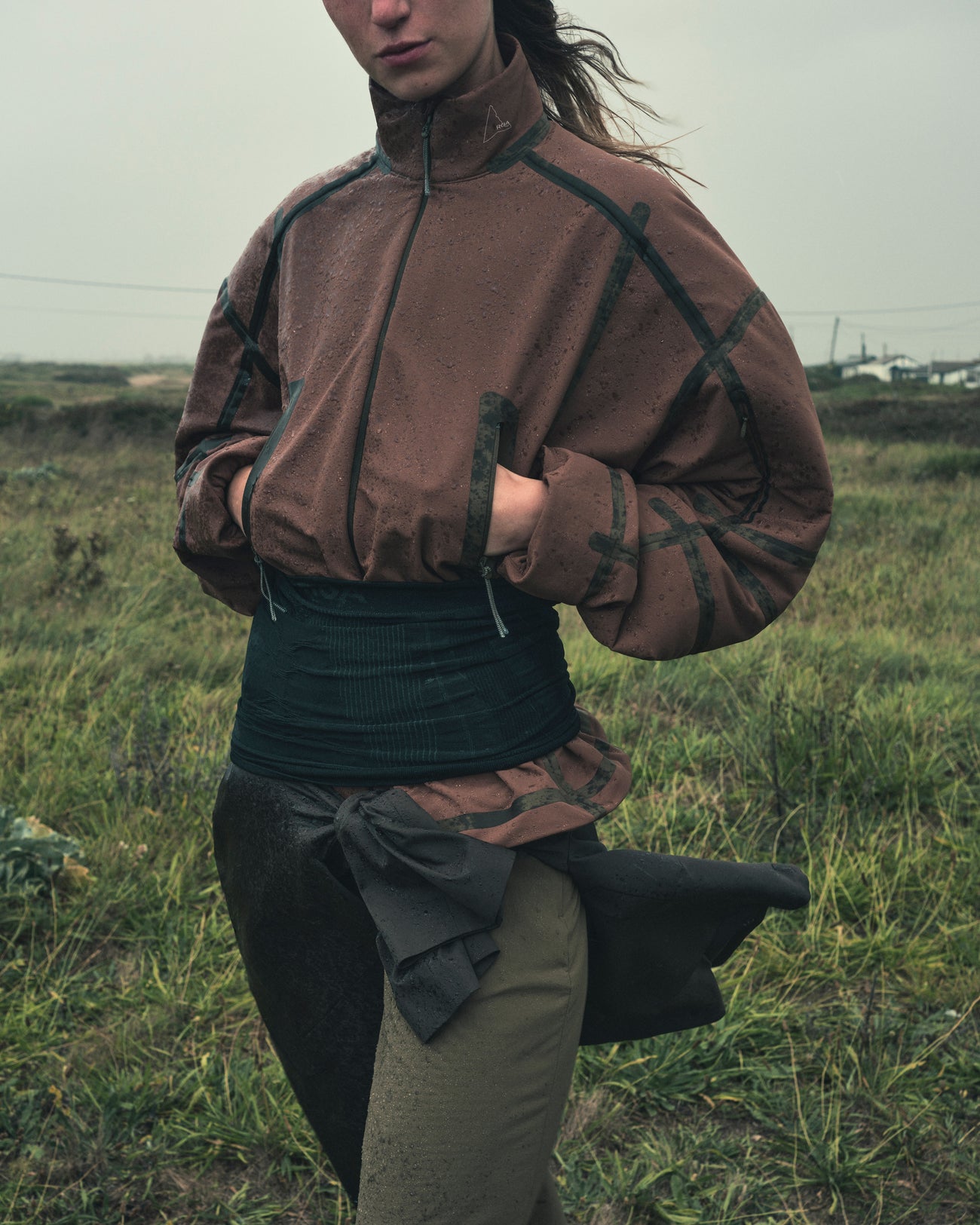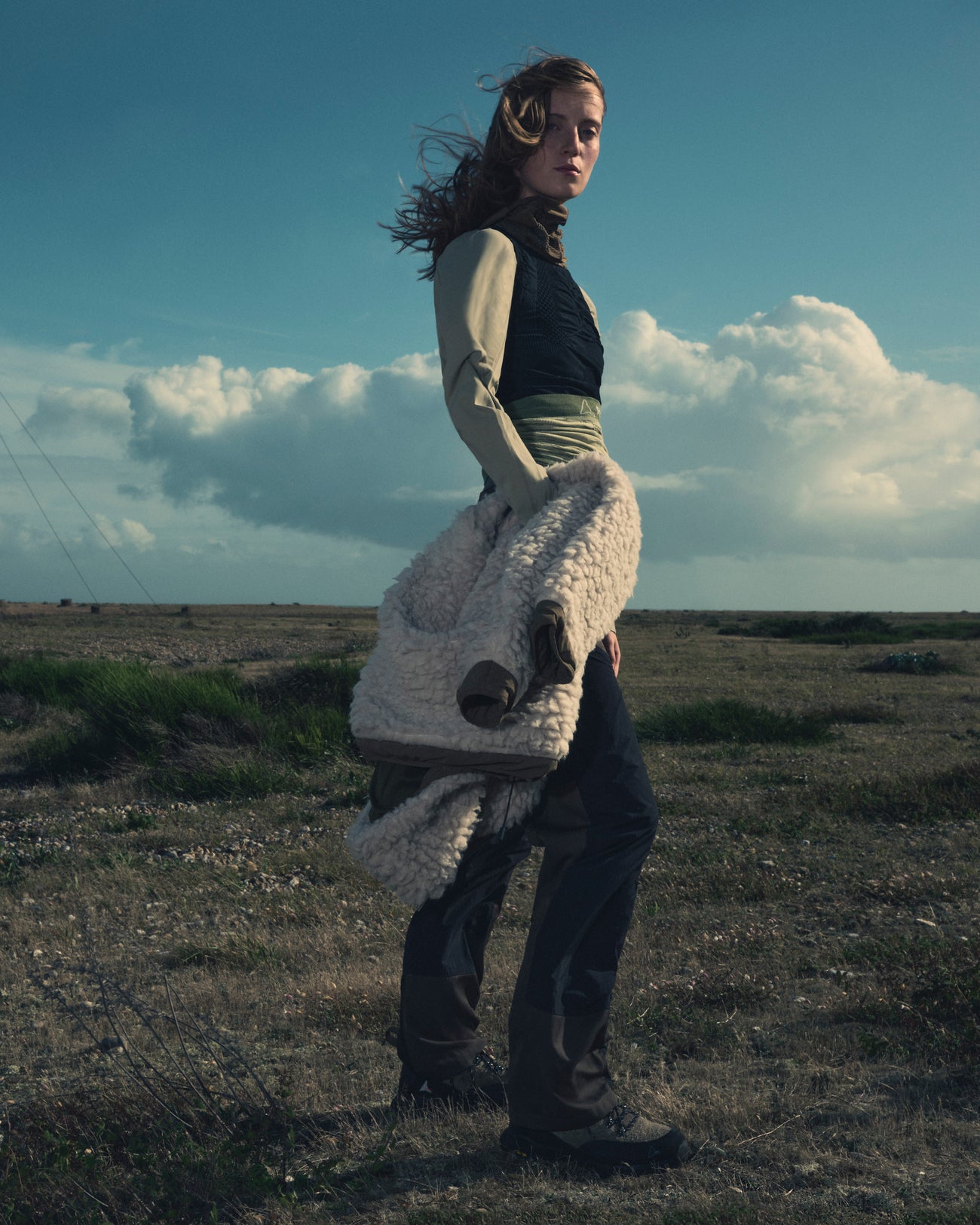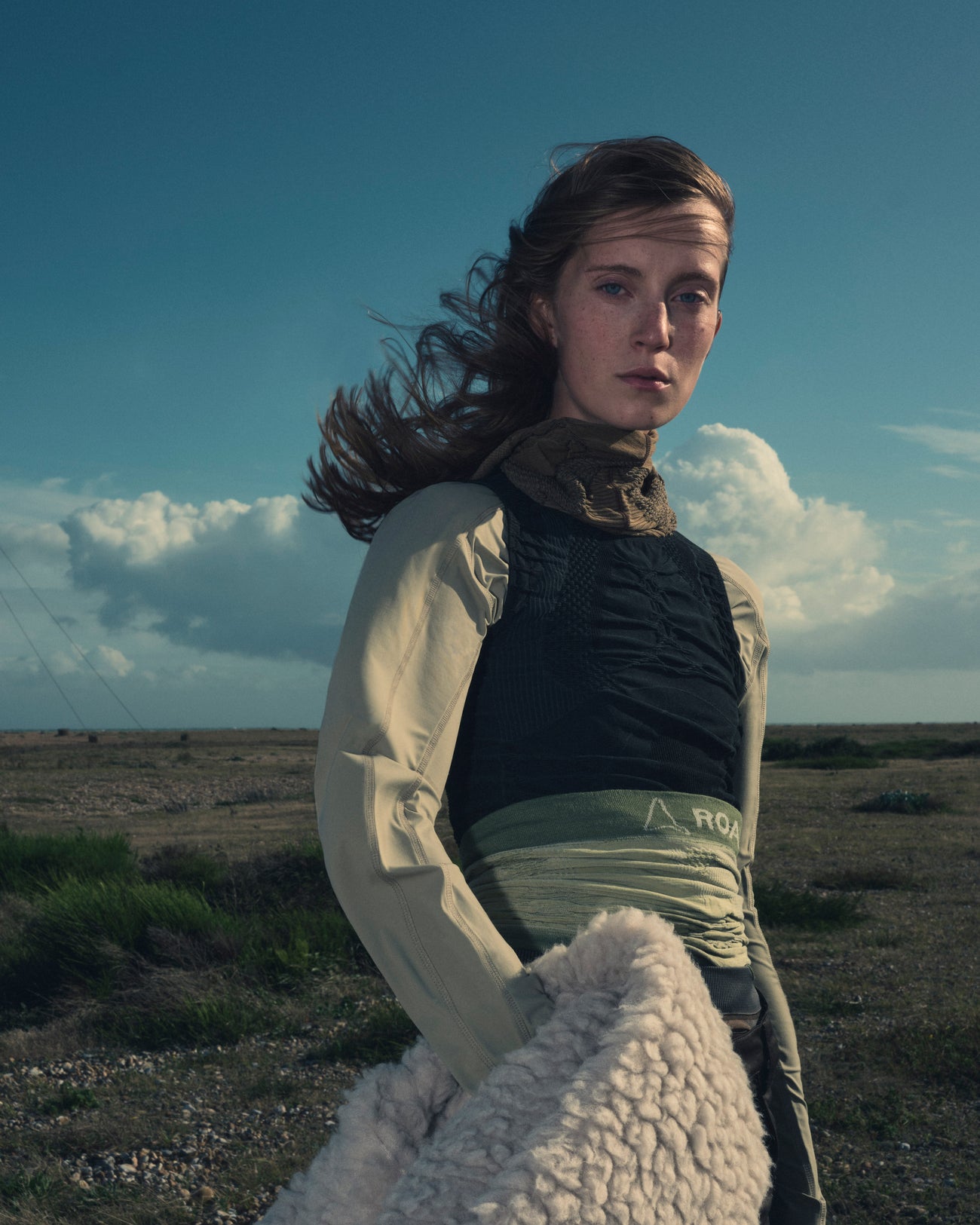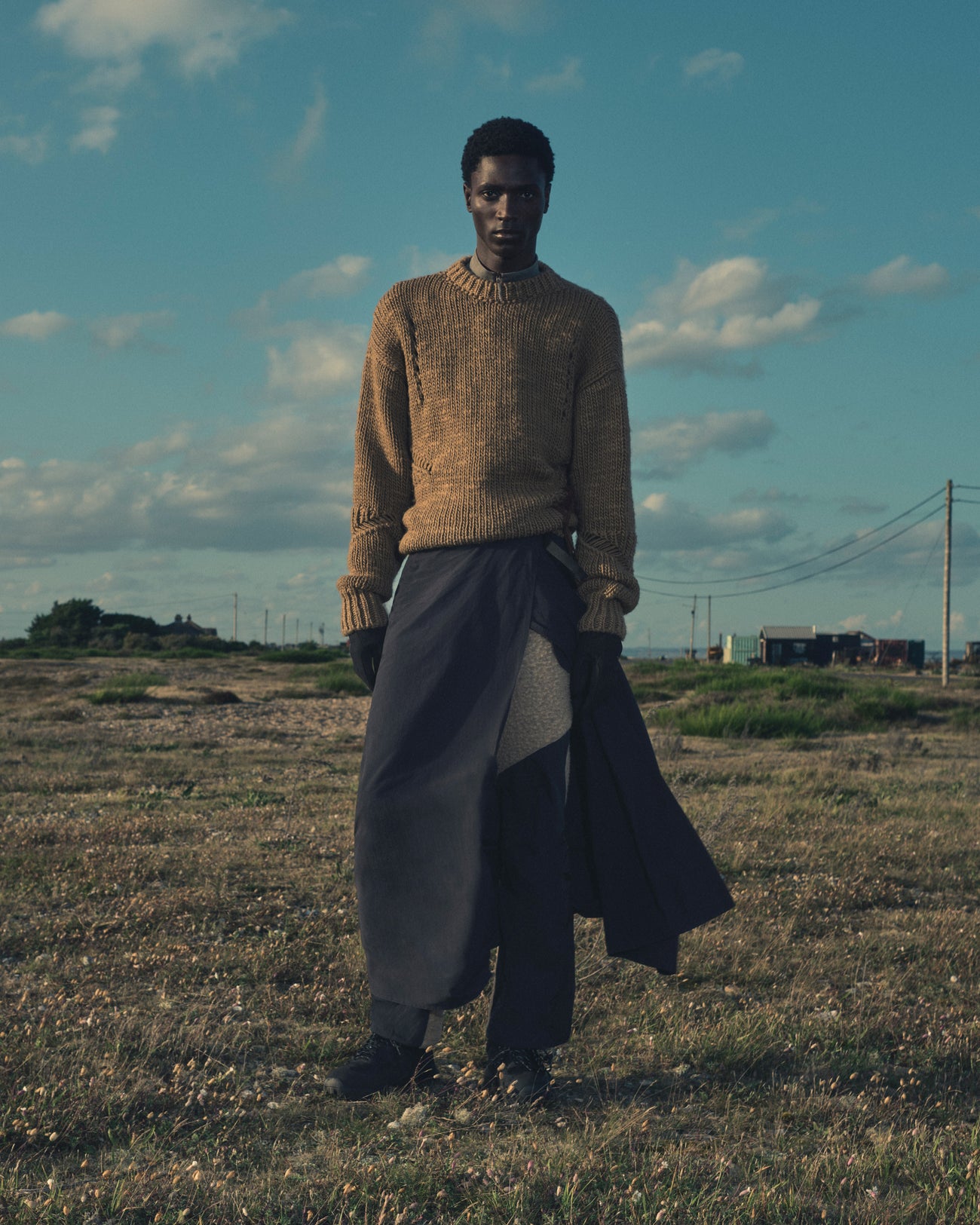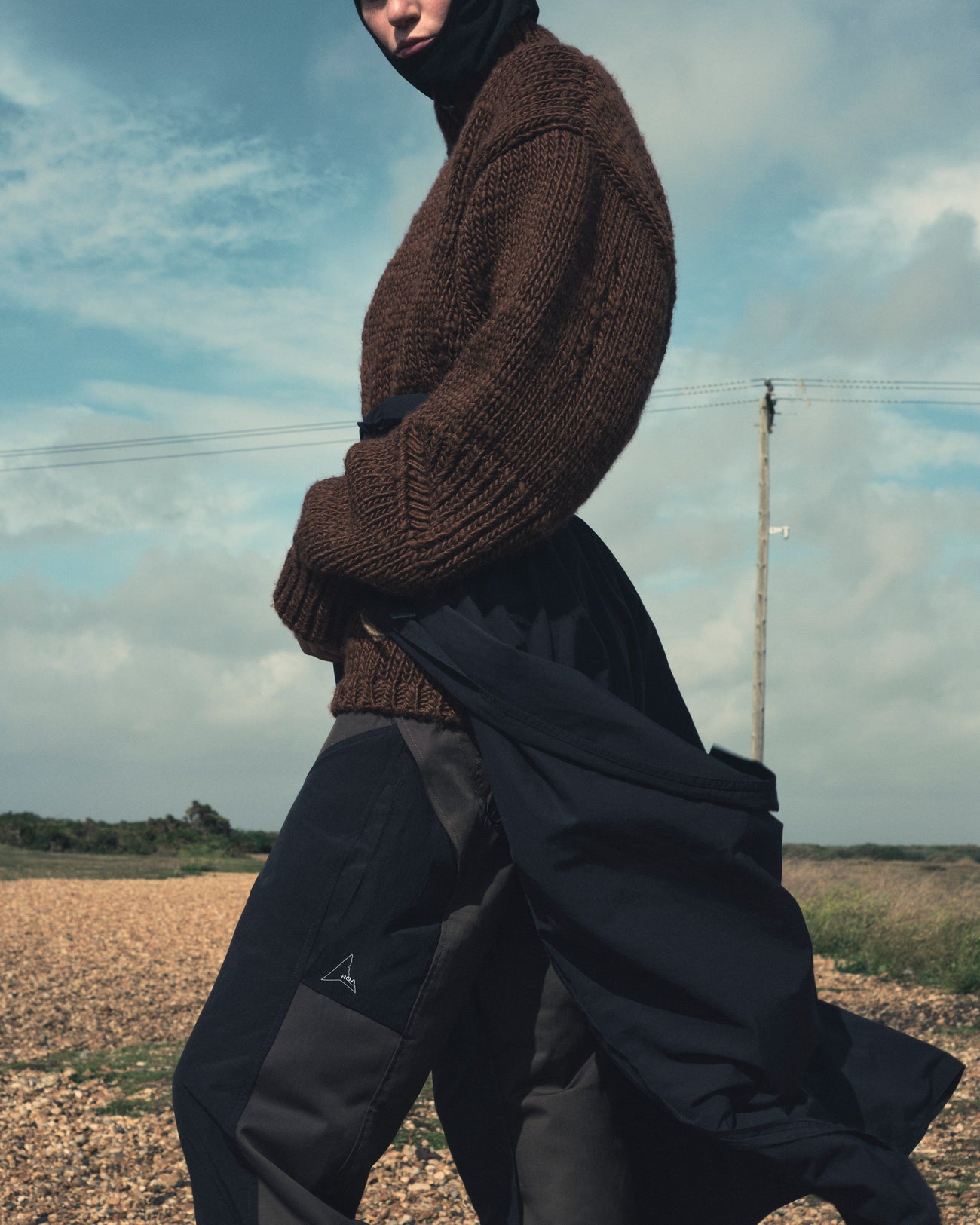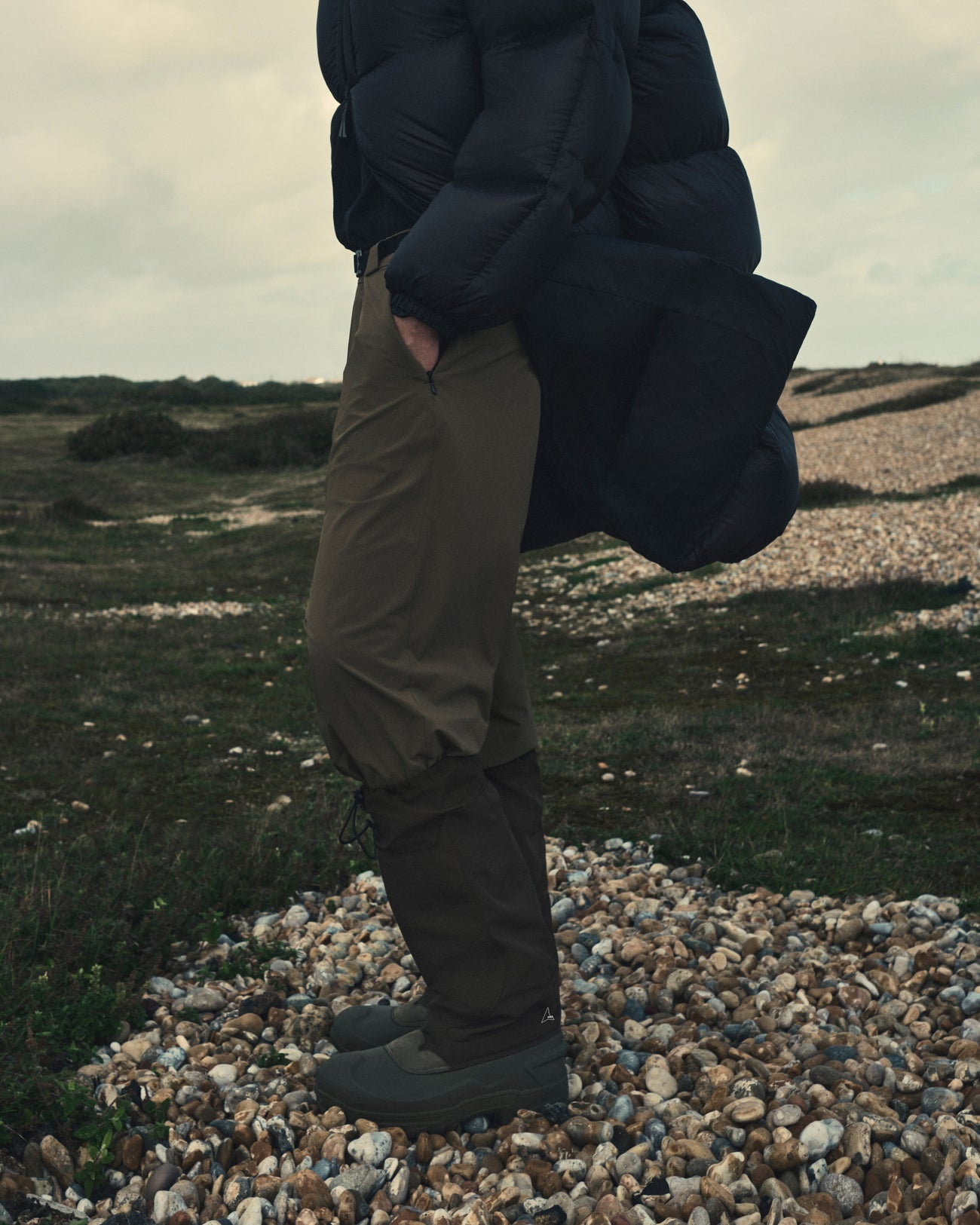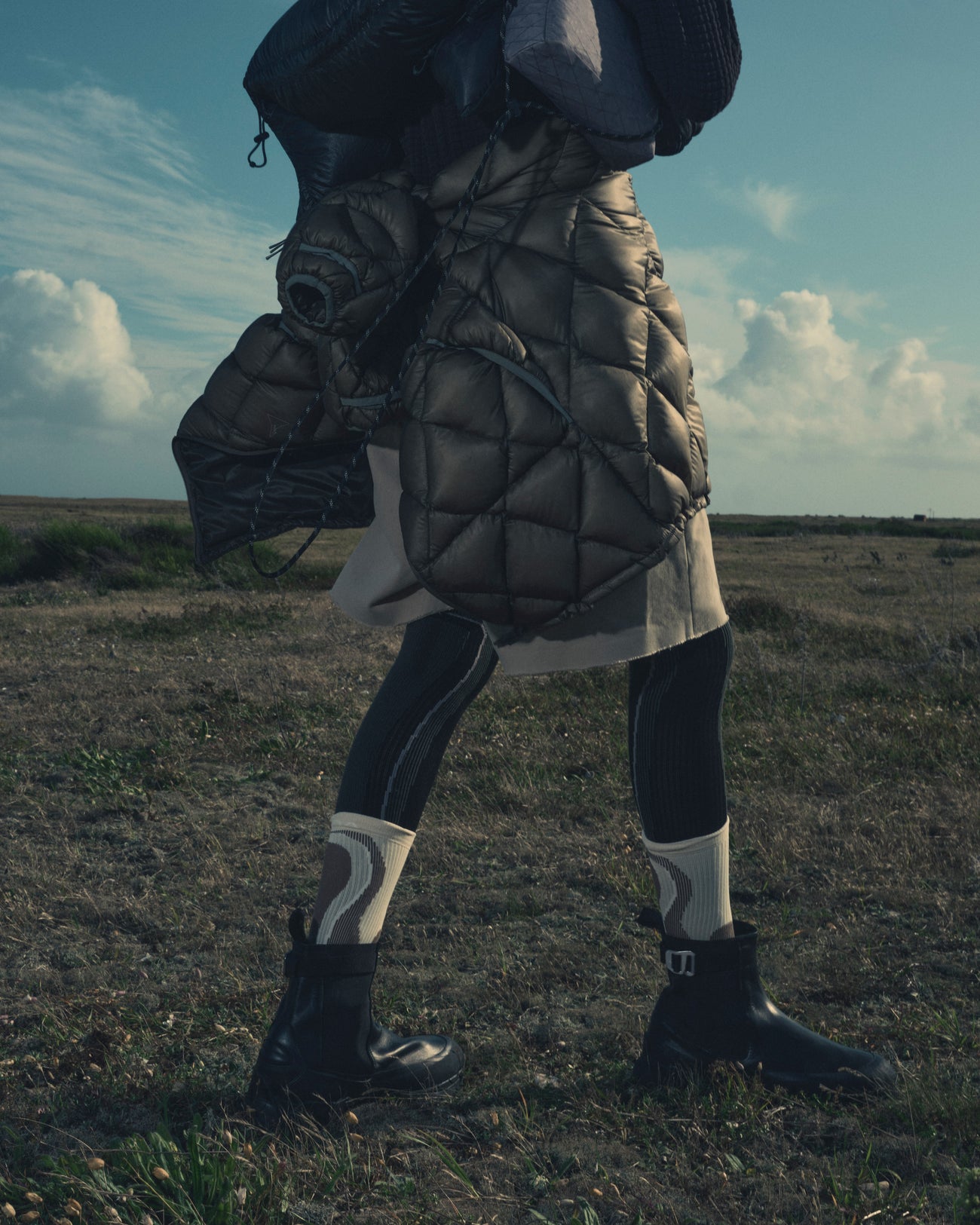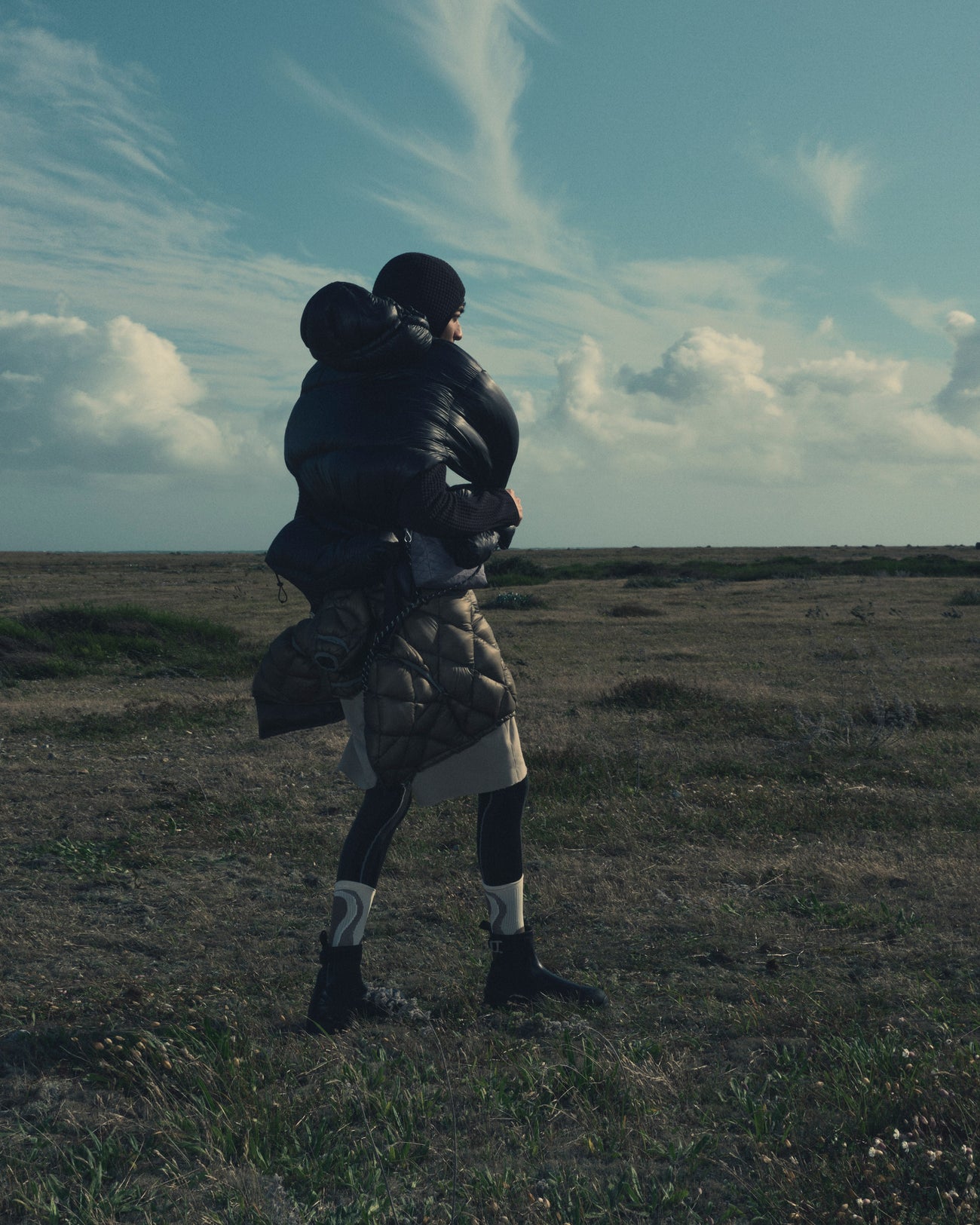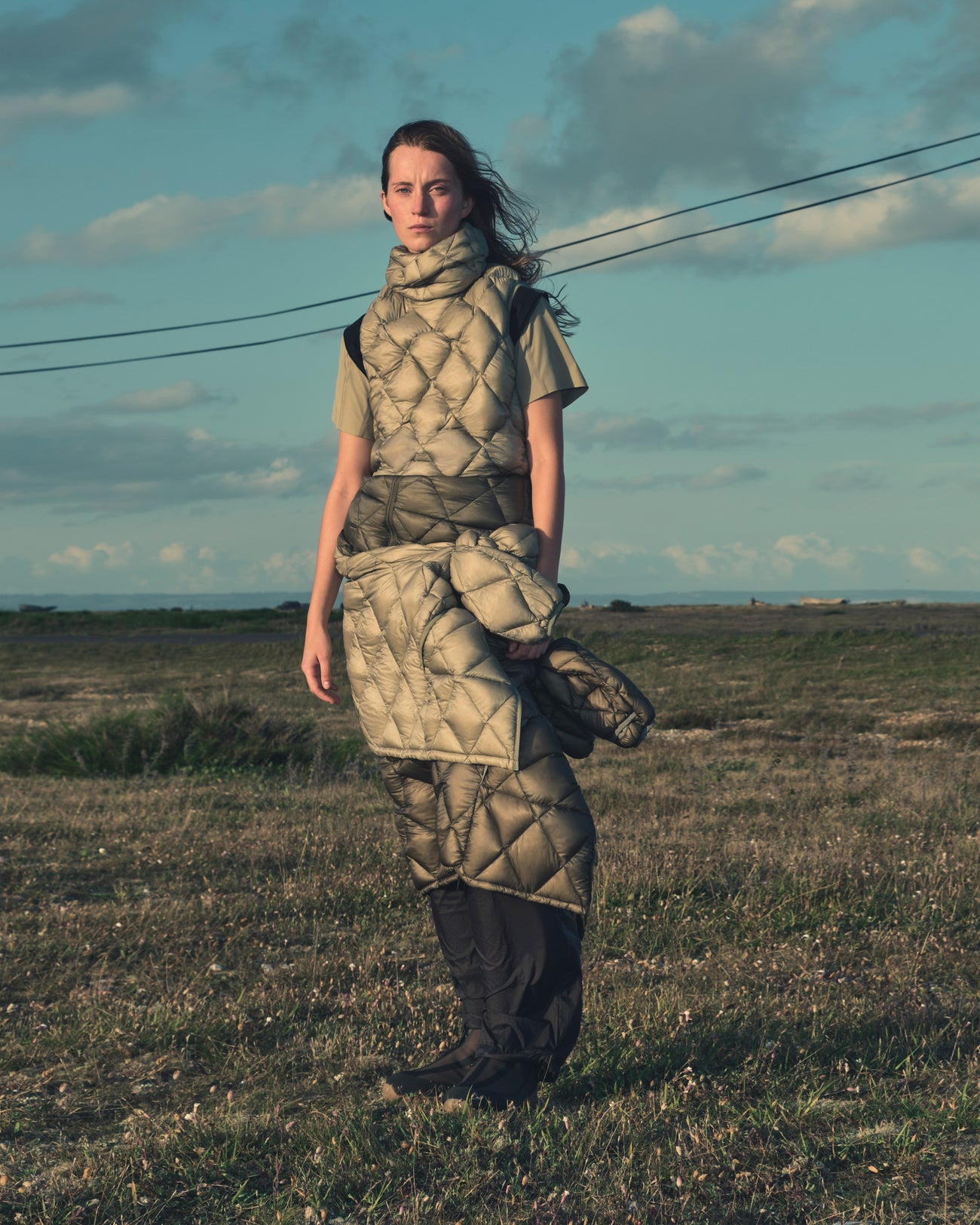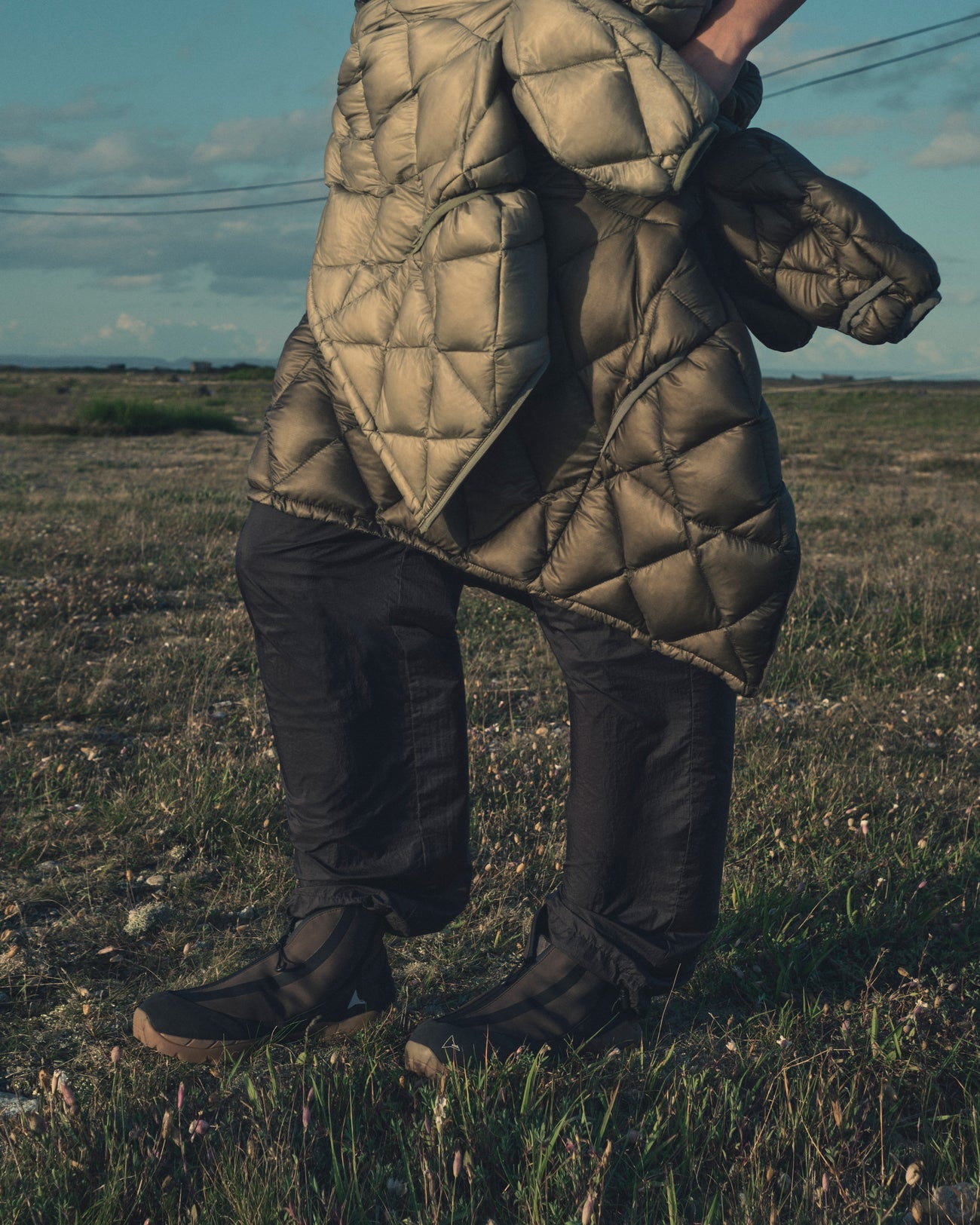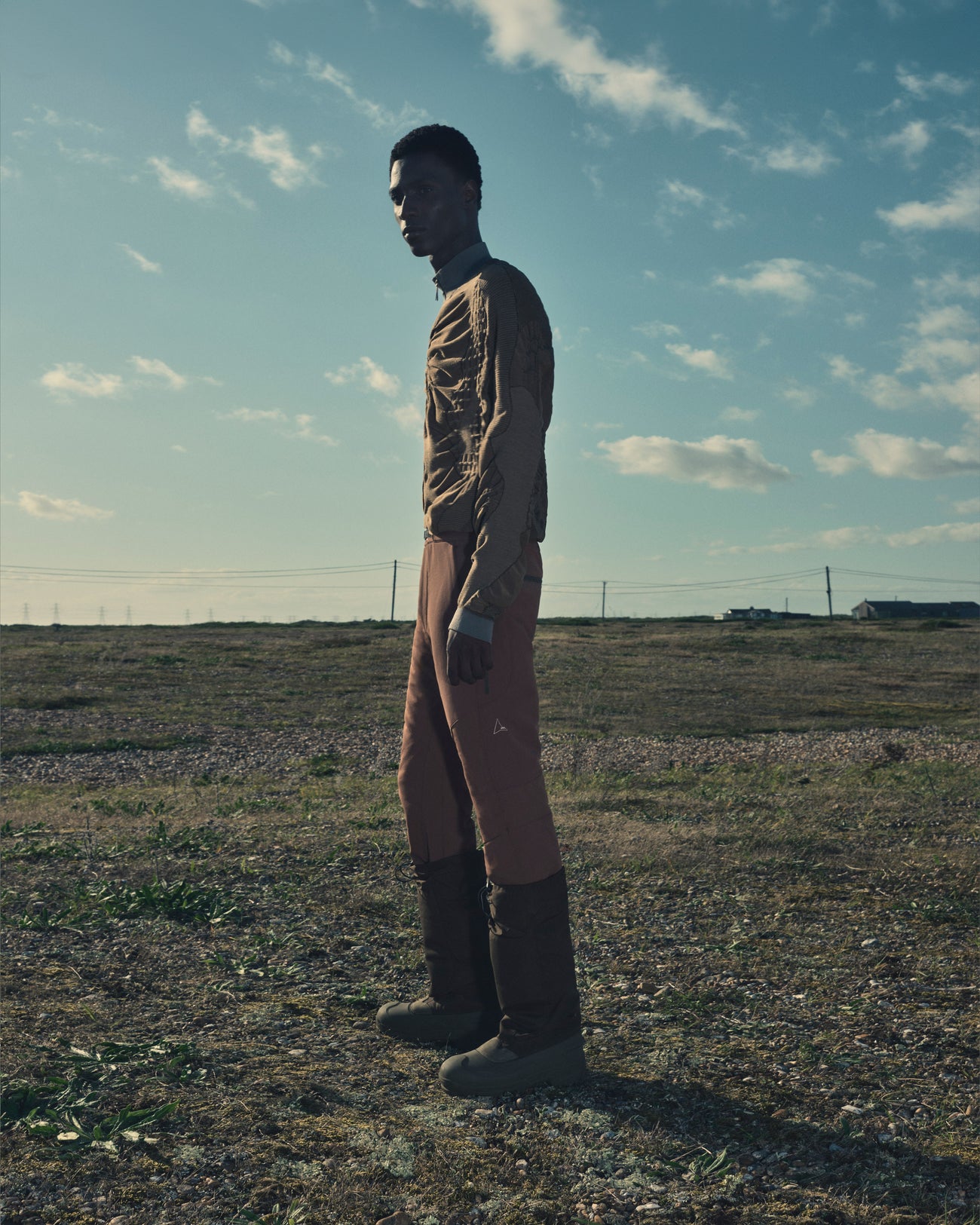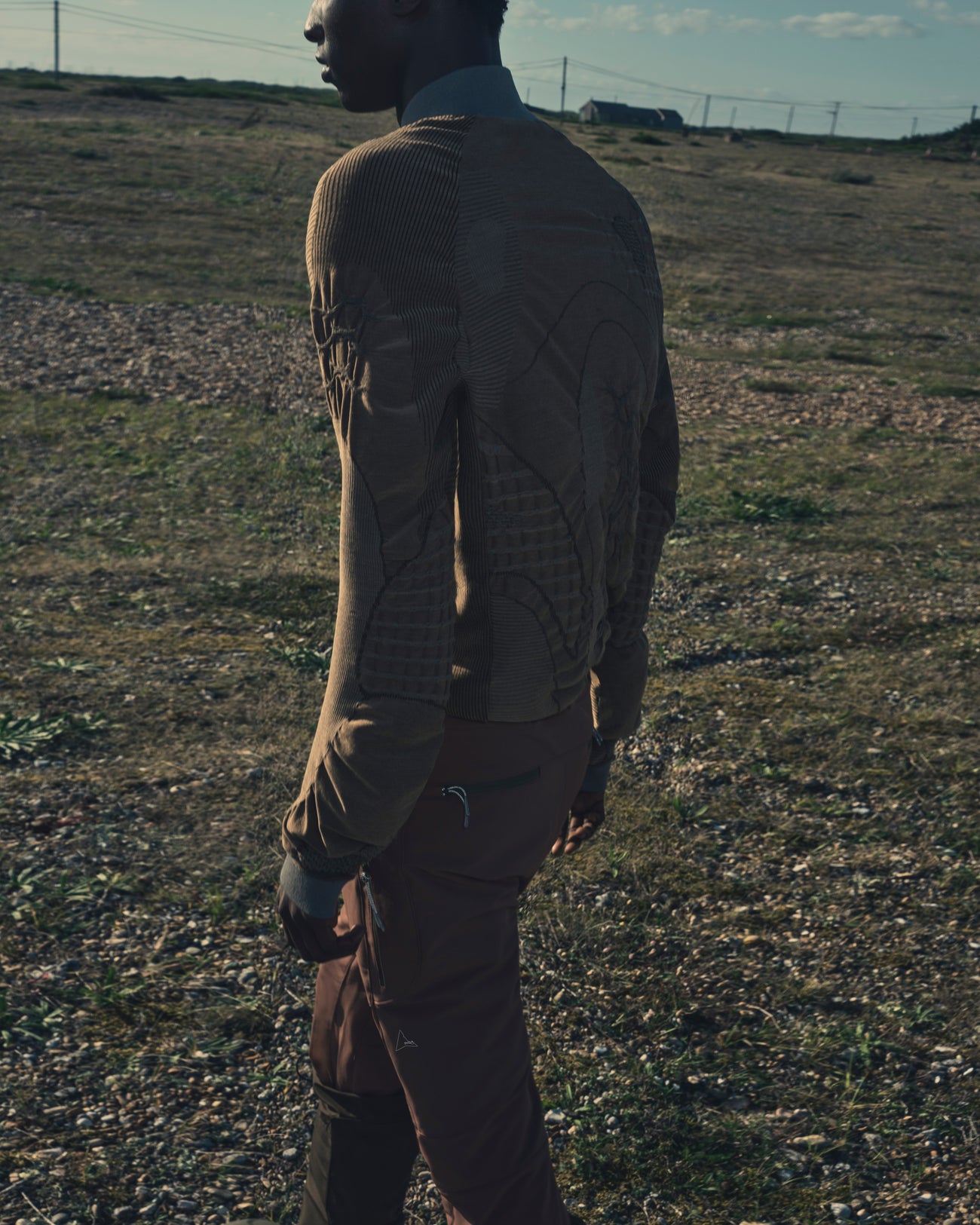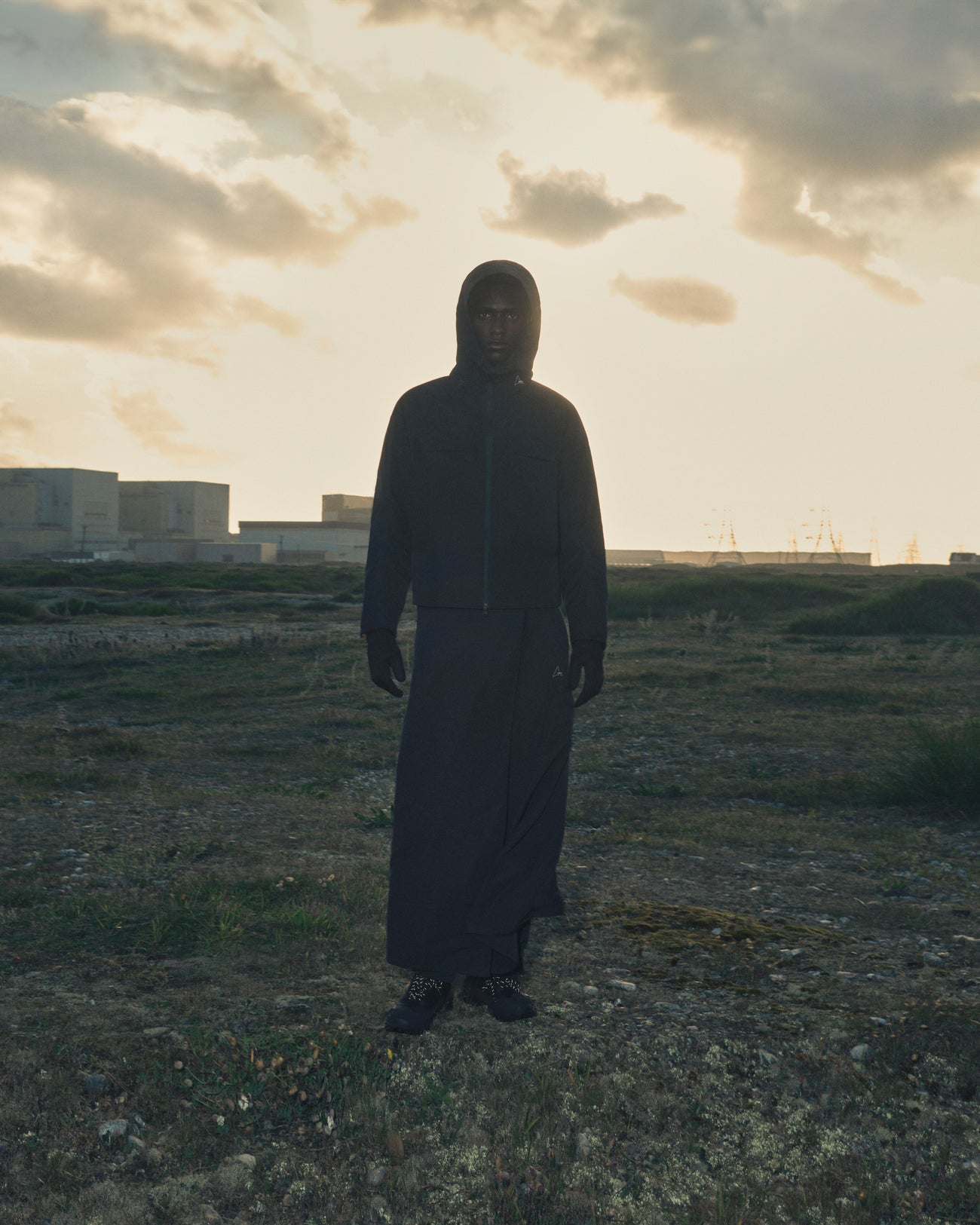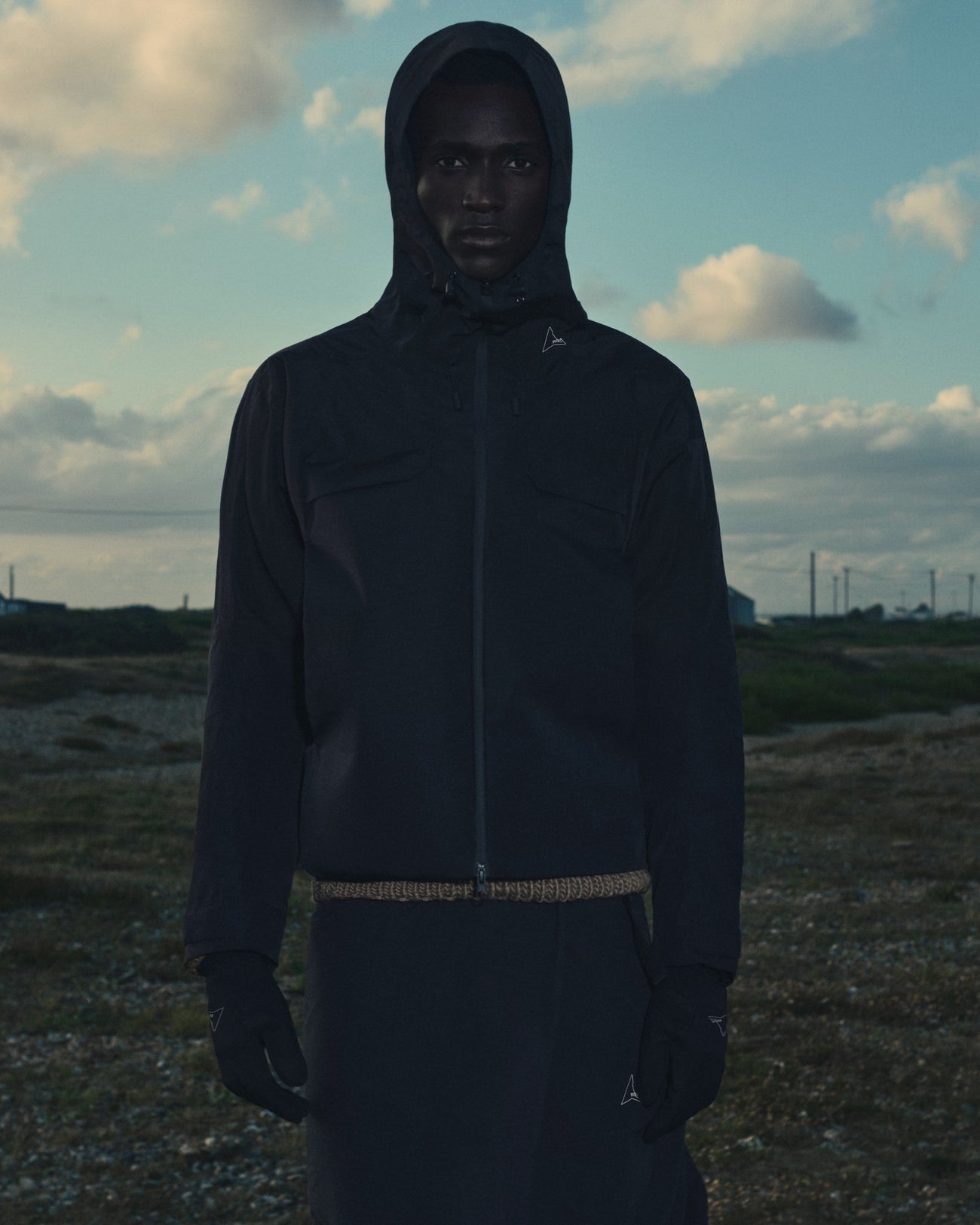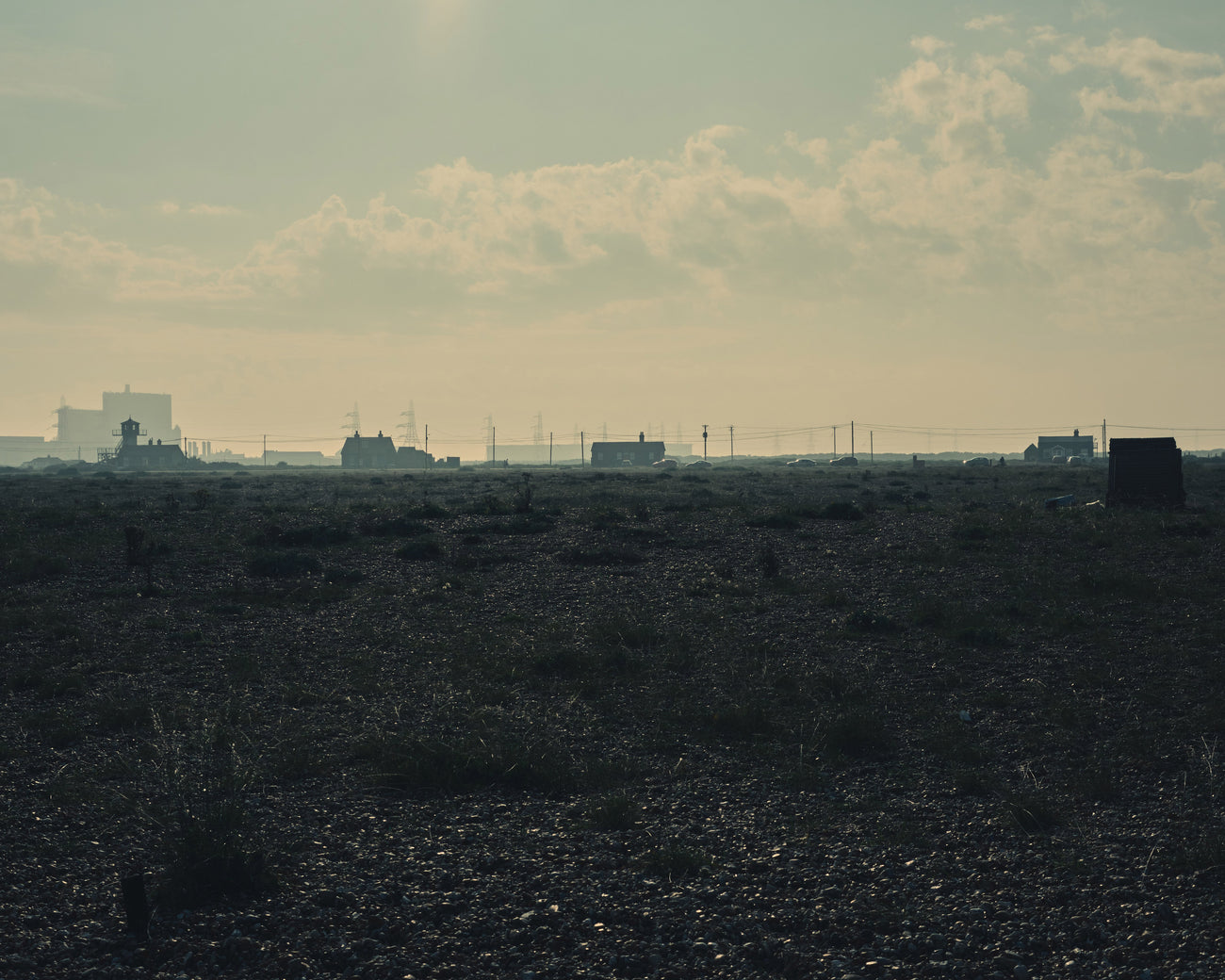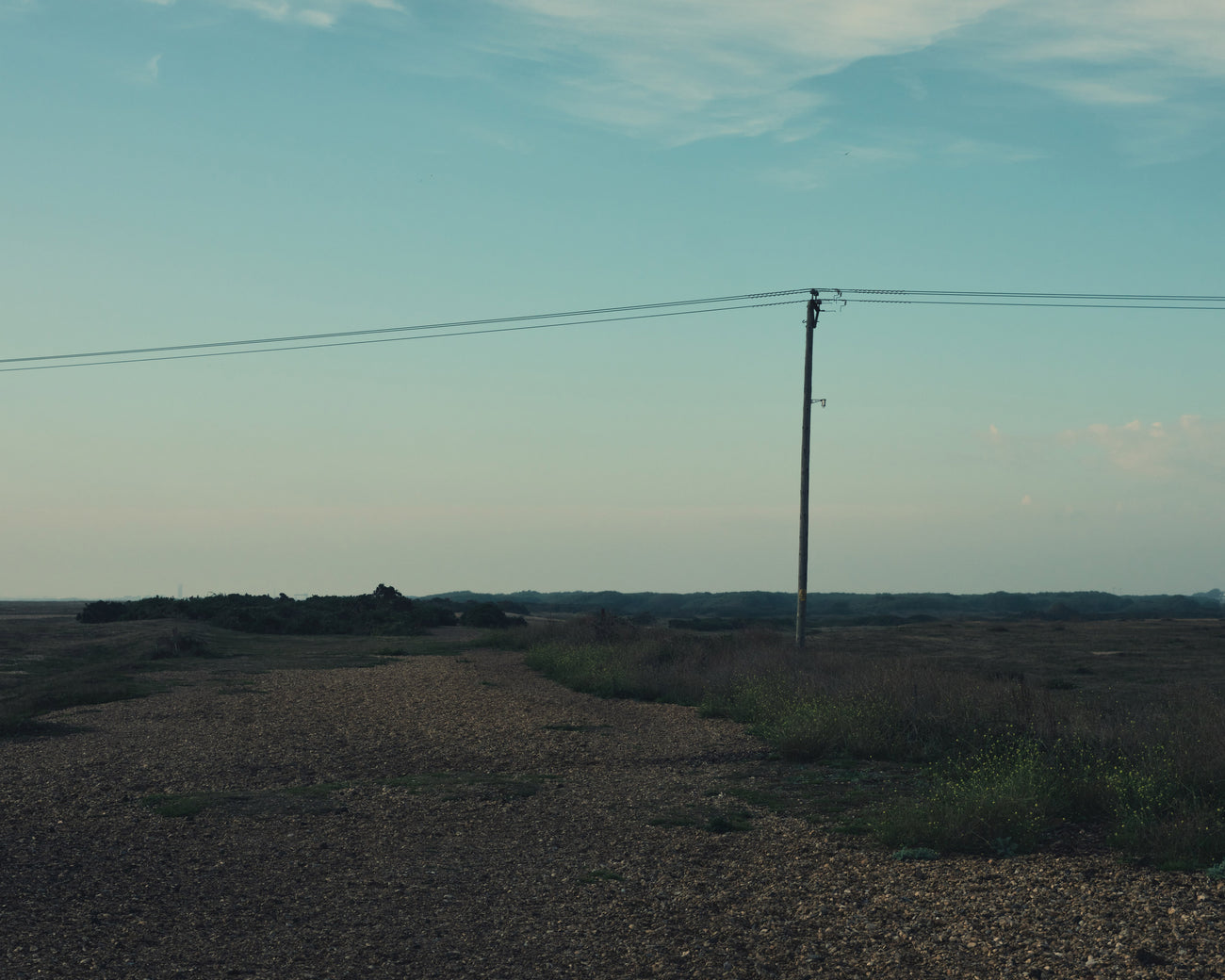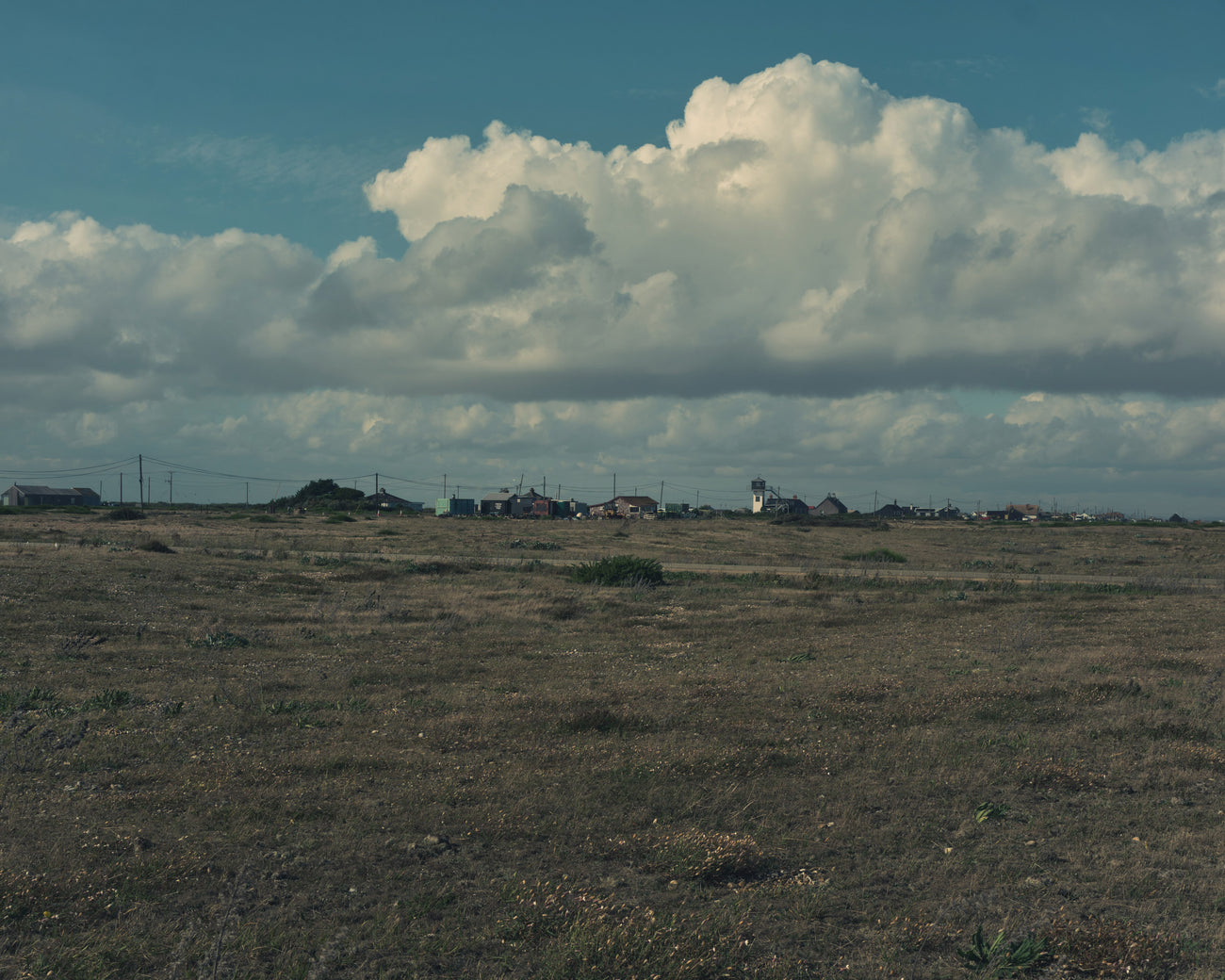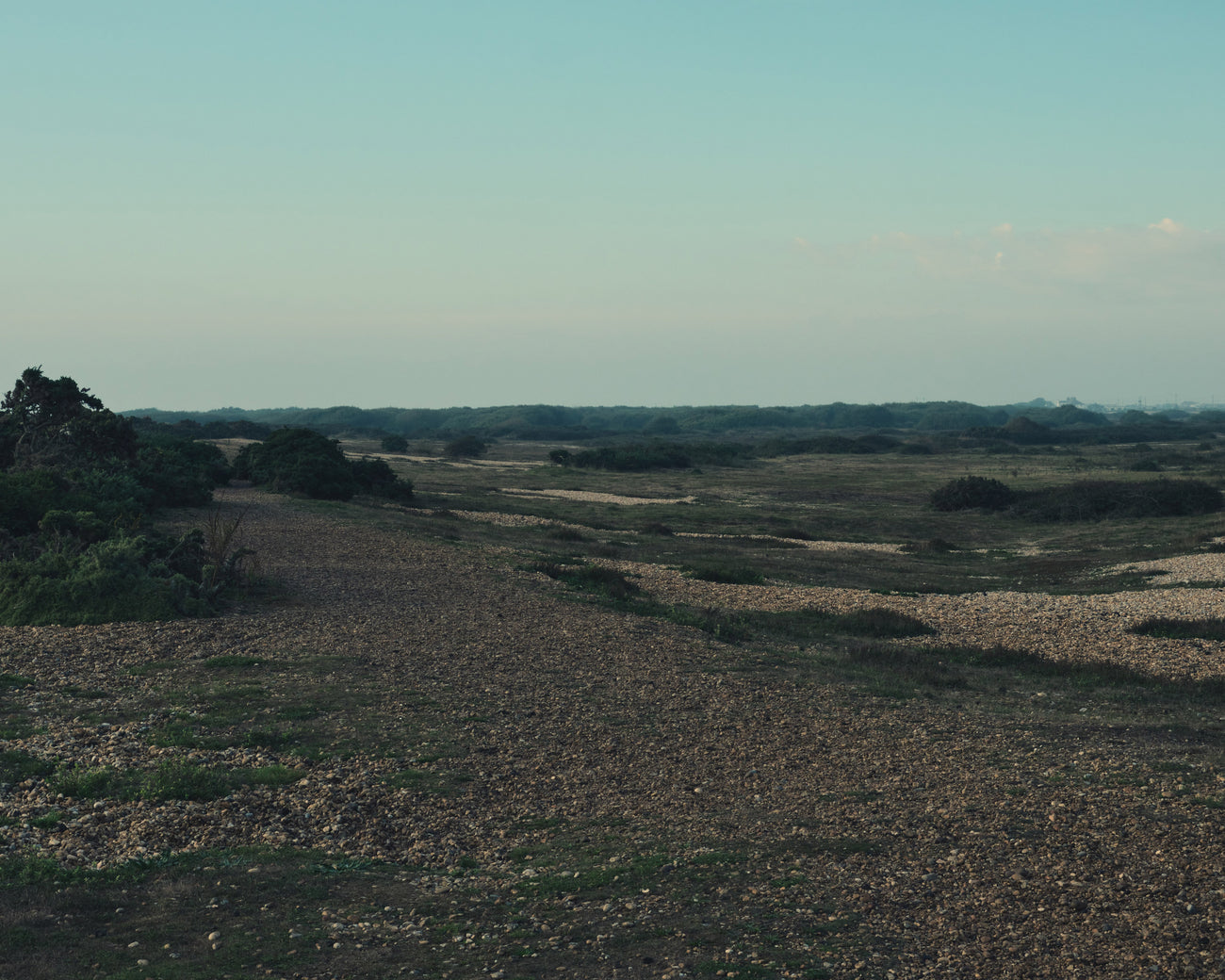FW23 Campaign
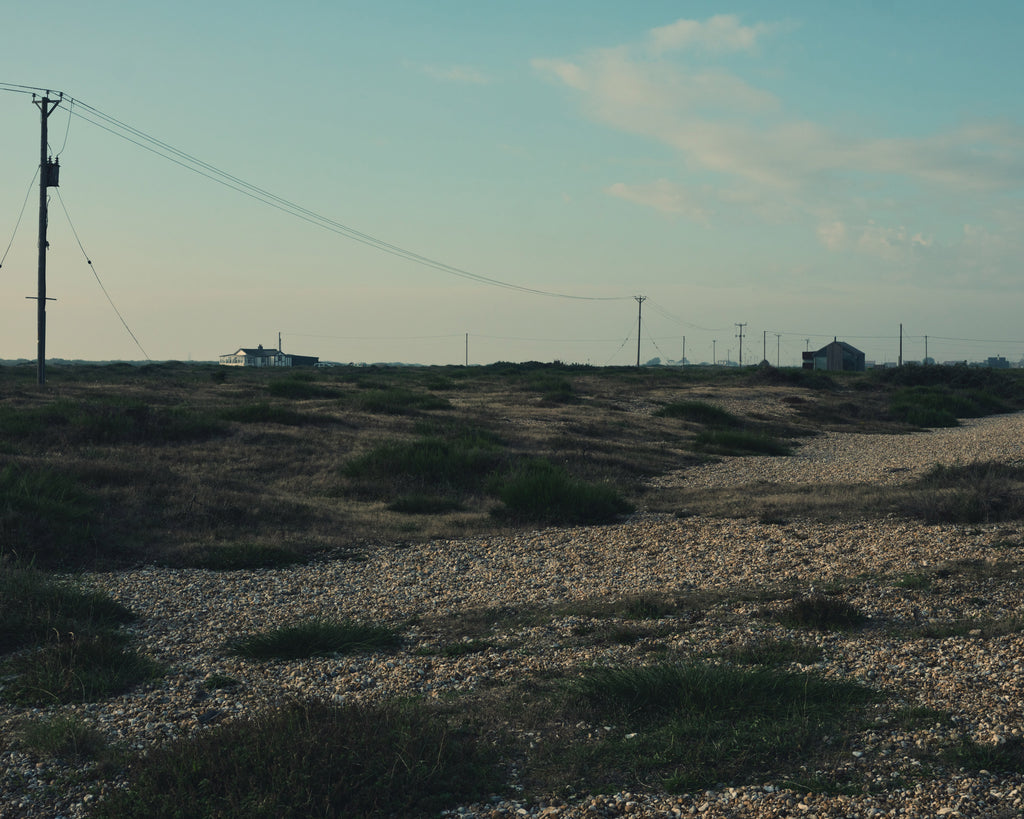
Dungeness, ‘The Headland at Denge’, from the old norse, is a stretching landscape made up of smooth shingle leading on from the protected wetlands of the Dungeness National Nature Reserve. Isolated, it sits looking over the straits of Dover and is home to a unique and fragile ecosystem. Shaped by the tides, the sea’s edge can only be seen if very close, peeking over a pebble ridge packed up by the waves.
Seals bob their heads along the waterfront, looking out for fishers and groups of refugees often land on these shores. Two nuclear power stations loom over the landscape to the east, harbouring a unique symbiosis in the recent evolution of the sea ecosystem. Having been there for almost 60 years, a patch of hot water continuously discharged from the site and locally called “the boil” or “the patch” is enriching the biological productivity of the sea bed and attracting seabirds. It bubbles amongst waters where bathers are increasingly discouraged from swimming due to rising levels of E.coli.
Having been a dumping ground for many years, abuse has left the landscape adorned with the remnants of human activities. In the second world war the military covered Dungeness in mines, due to its position. Whilst destroying them artificial craters were made. Mine craters are rich in plant life, which shows that meddling with the landscape works. (Derek Jarman).
The reserve is home to incredibly rare species of moths, bees, beetles and spiders, some found nowhere else in Britain. Endangered Great Crested Newts can be found in the artificial waters of Romney Marsh, a landscape designed to support the nesting and breeding of birds which visit the area. Yet there is a darkness to this place, fenced and regulated, moody and distant. Bought by EDF Energy in 2015 Dungeness is at a development standstill, tight restrictions disallow any new projects and major restrictions are in place to stop continued exploitation of the land.
Access is denied in the quest for conservation and control yet harbours a further disconnect from the trueness of this ancient environment. There is little to interrupt anyone who wanders in this seemingly deserted landscape, yet distinct events puncturing the silence indicate the passing of time. Layers of varied ecosystems reach from inland to sea challenge our human ideas of desertedness. Dungeness is very much alive and the success of drought tolerant plant species here might become an inspiration for the future to come.
Here, Derek Jarman curated his garden. Transplanting cuttings of the hardy species which line the shore during morning walks. Following the advice offered up by the landscape he stakes driftwood and water worn stone necklaces as supports. Everything was found and similarly scaffolded, then all left to take their chances with the extremes of the landscape. Santolina and helichrysum are shaped by the wind, adding a natural collaboration to the human-determined sculptural aspects of the garden.
The garden evolves through life and regeneration invoking the magic of Dungeness which shifts from barren wilderness to jolly nursery with the turning of the seasons. Mirroring it within the meticulous formations of stone and metal evident in its inspiration from the paganism of Britain’s ancient historical landmarks, the garden Illuminates its energy through the passing of time and its passing through hands.
